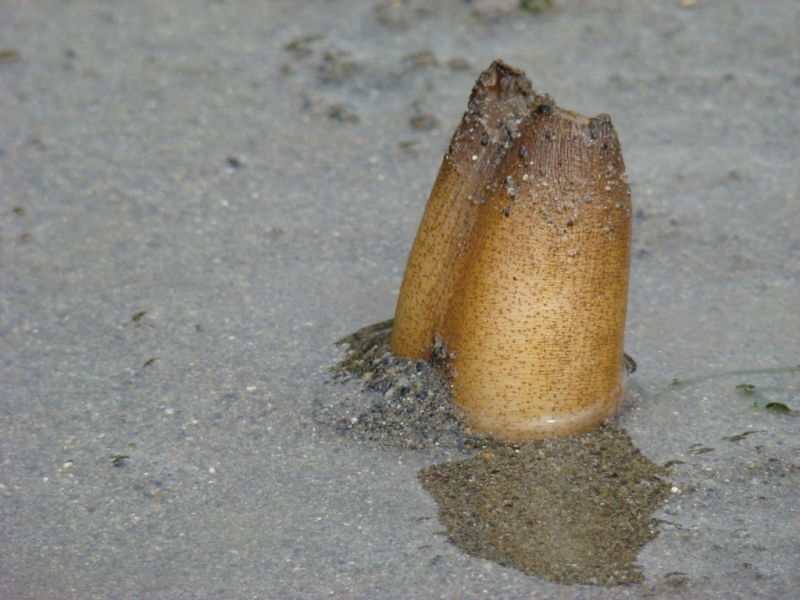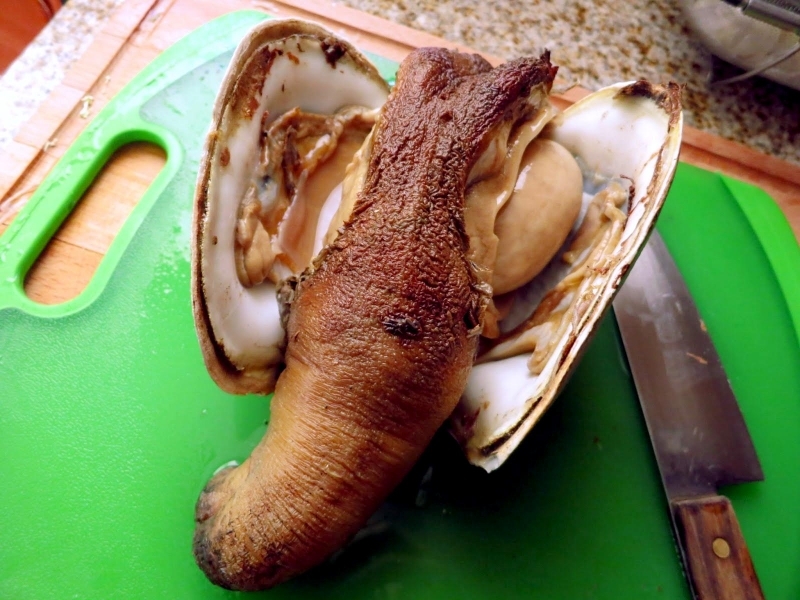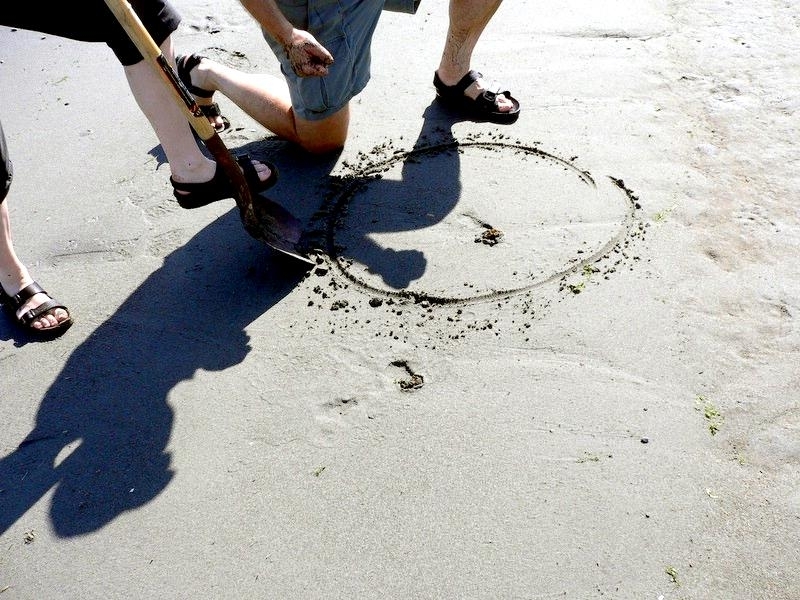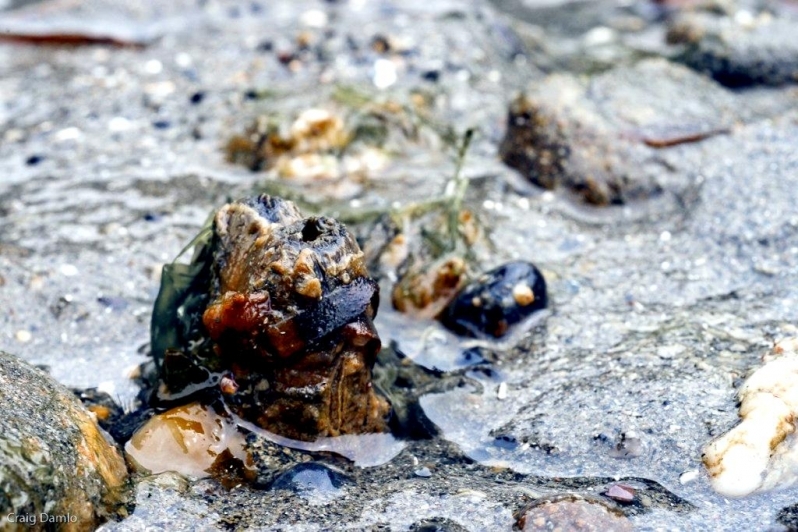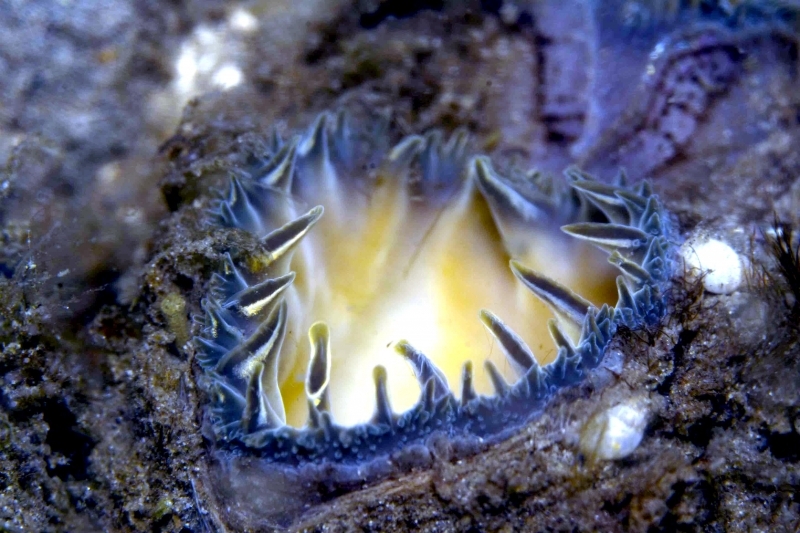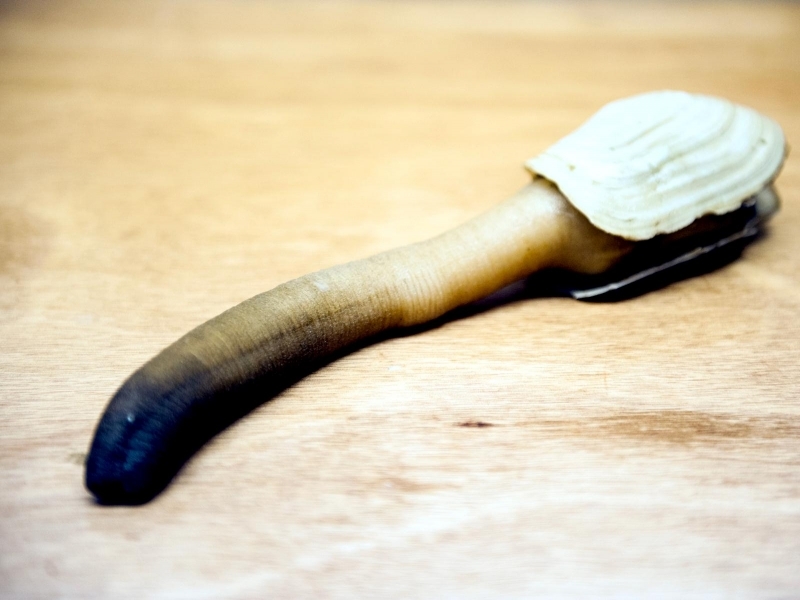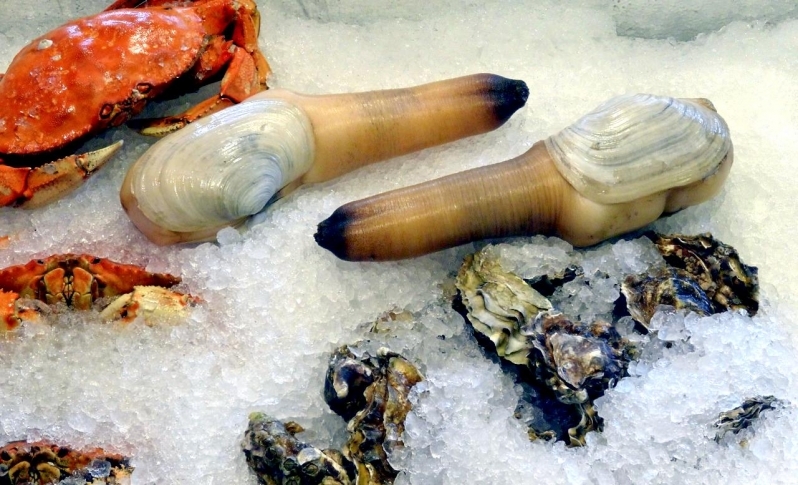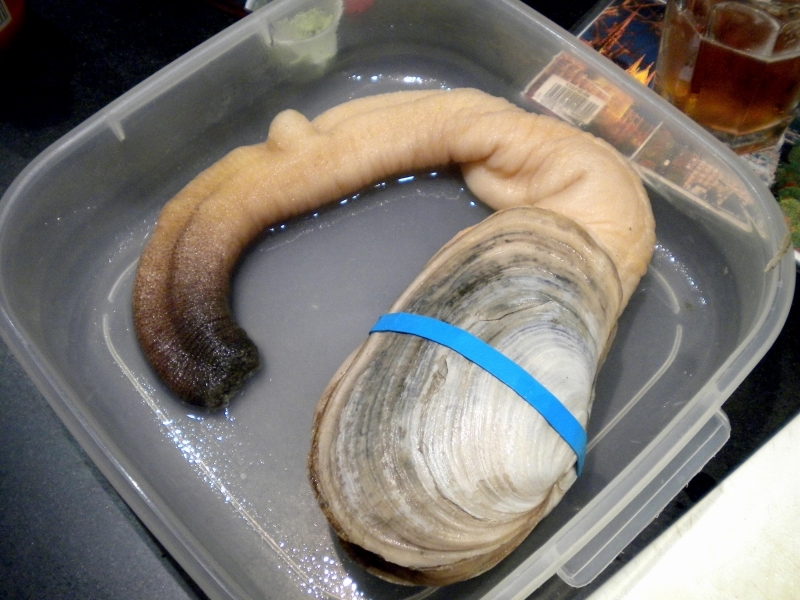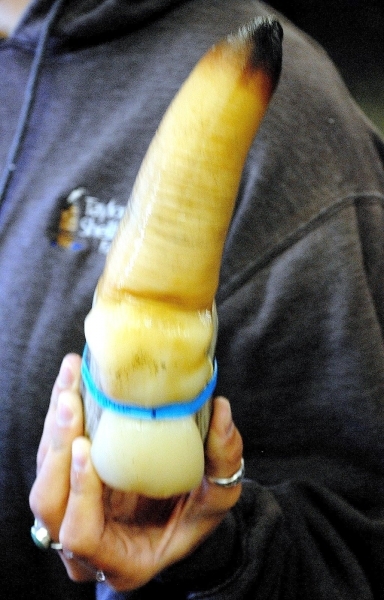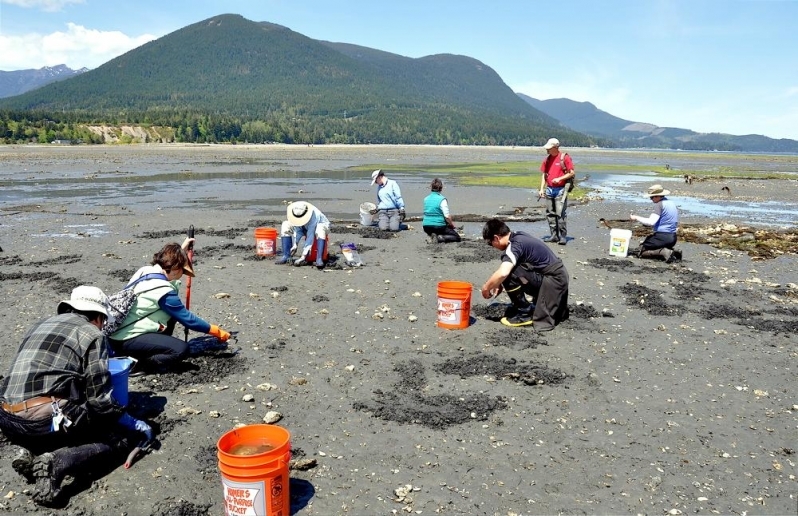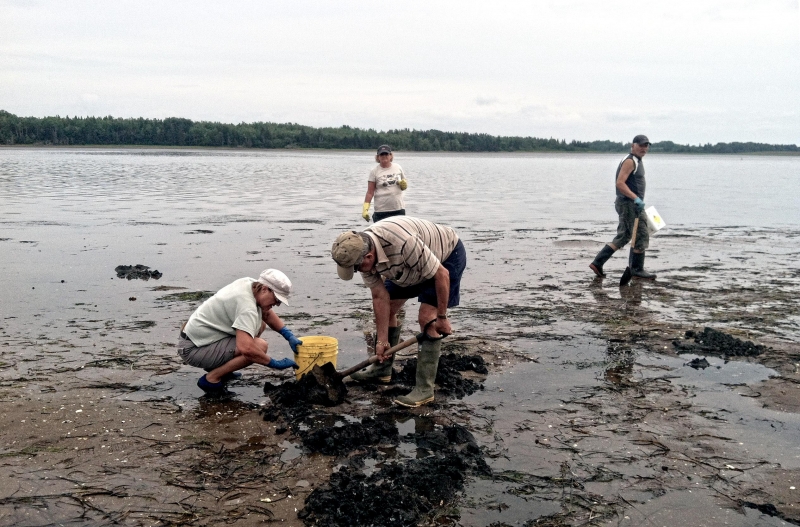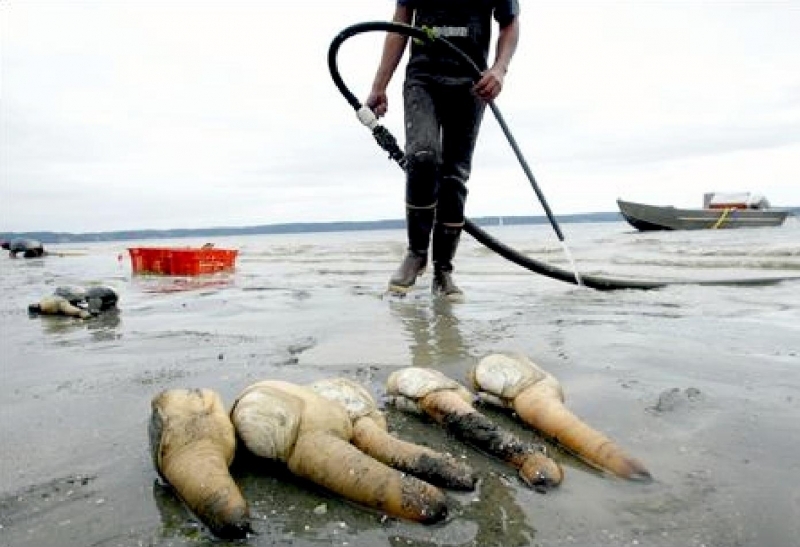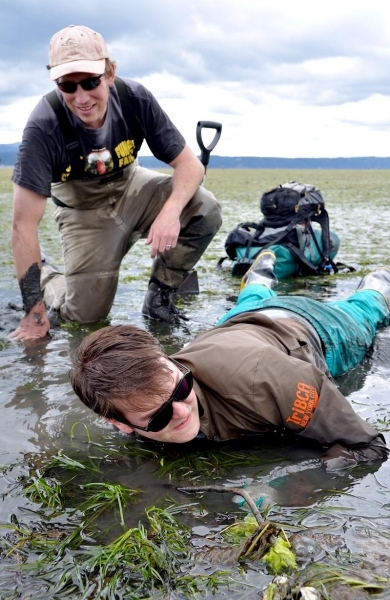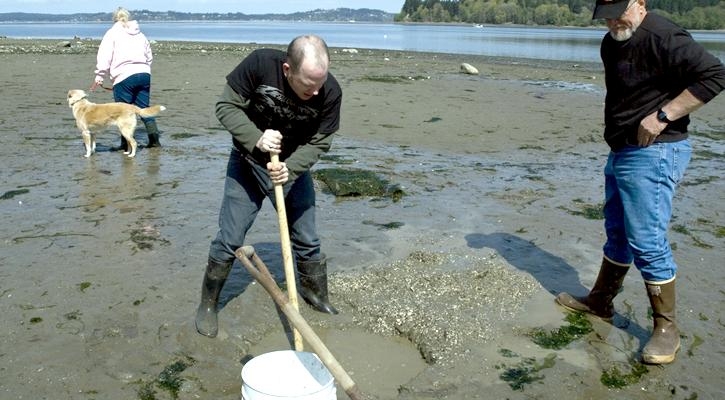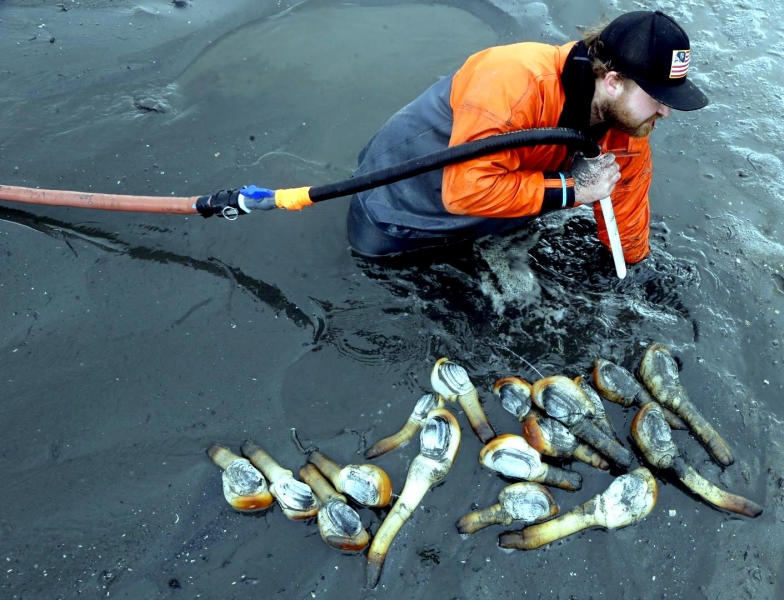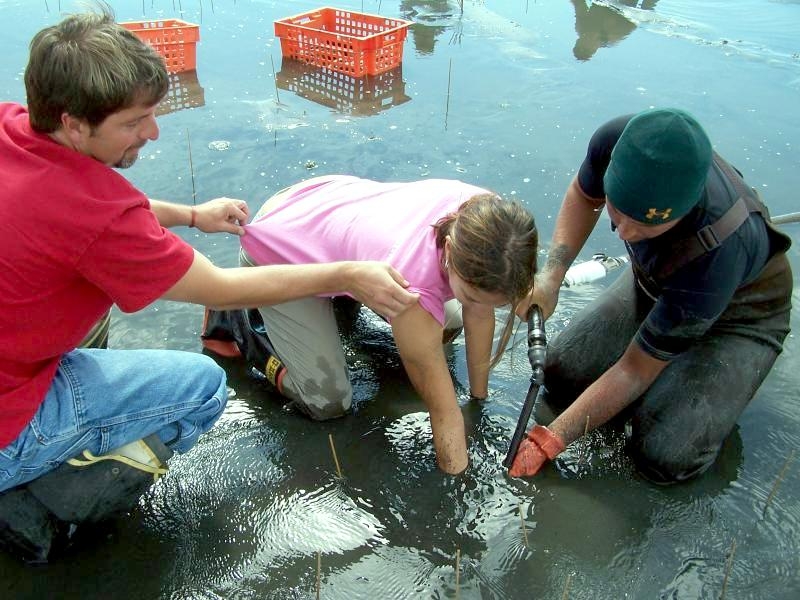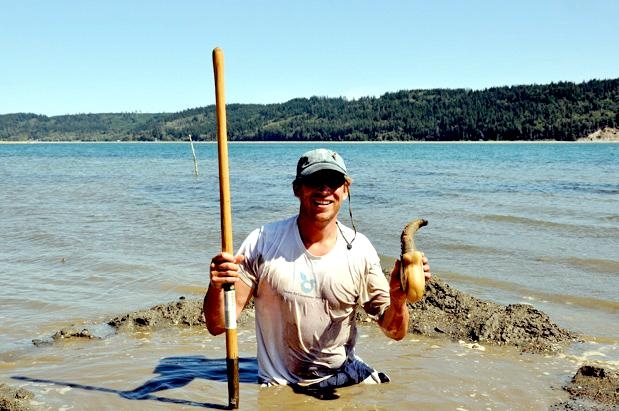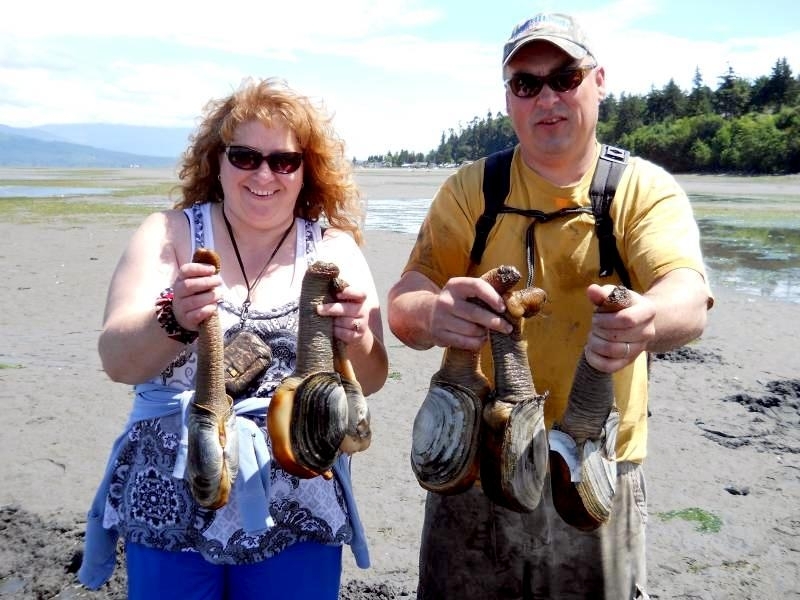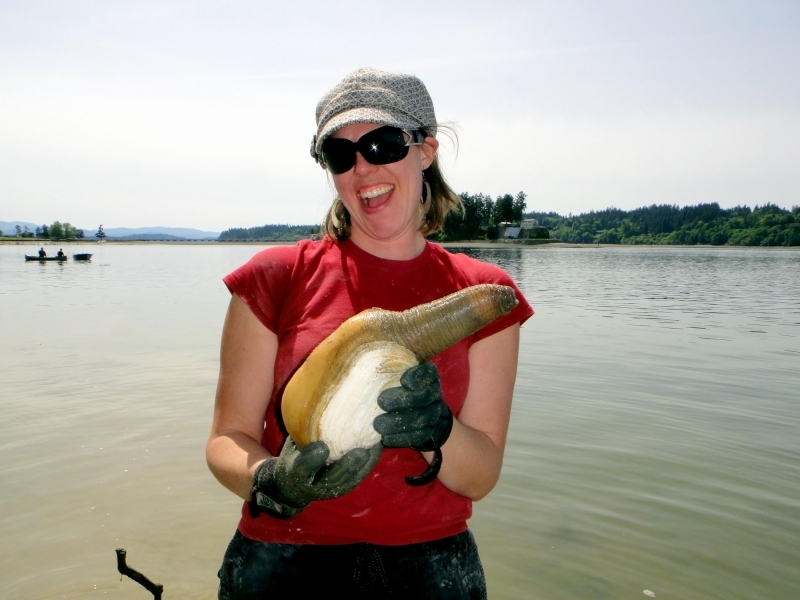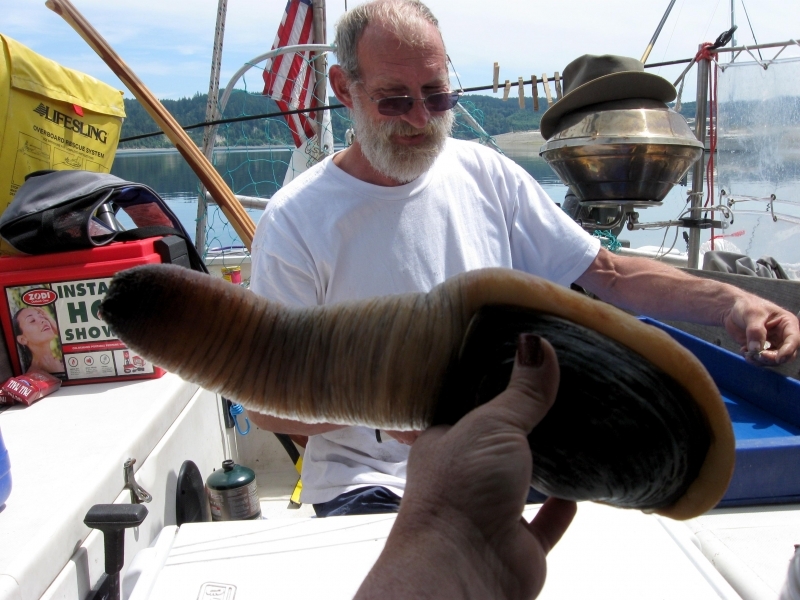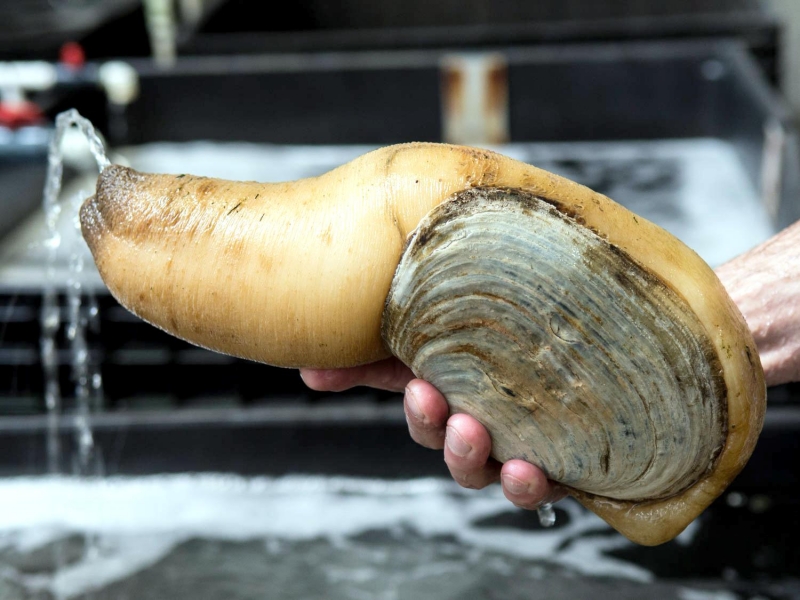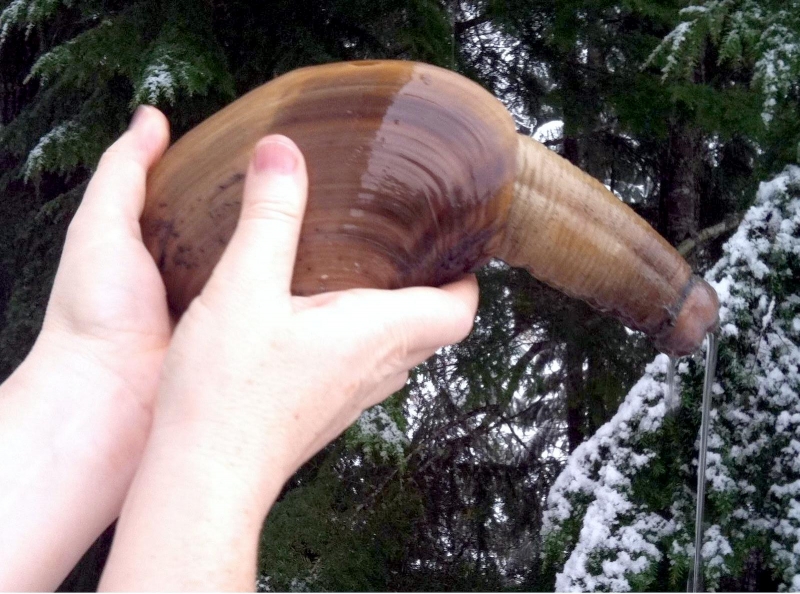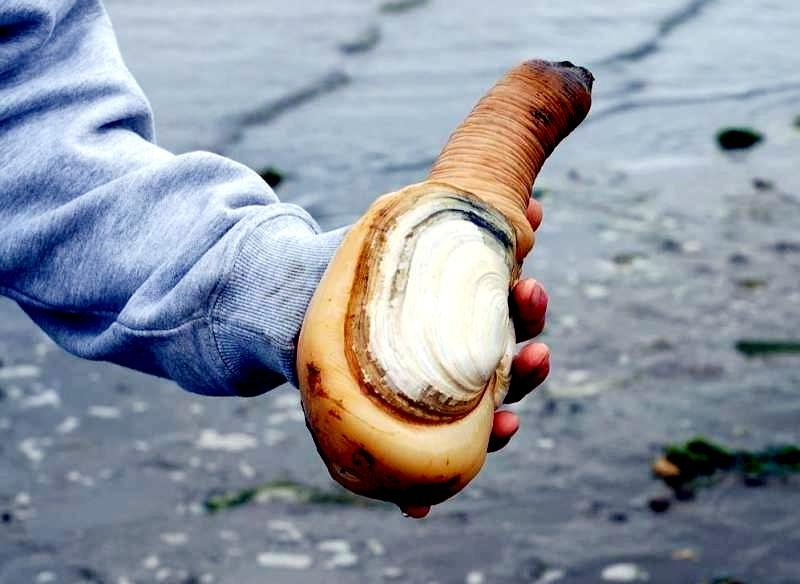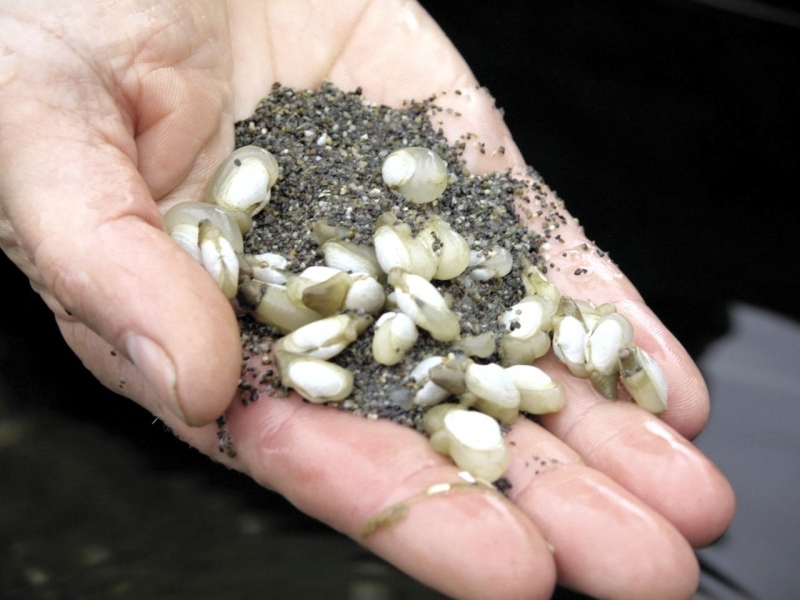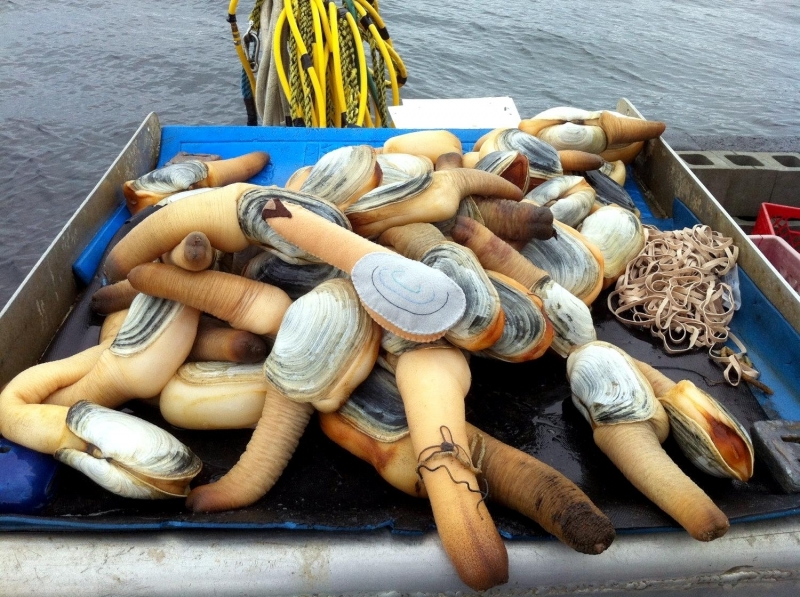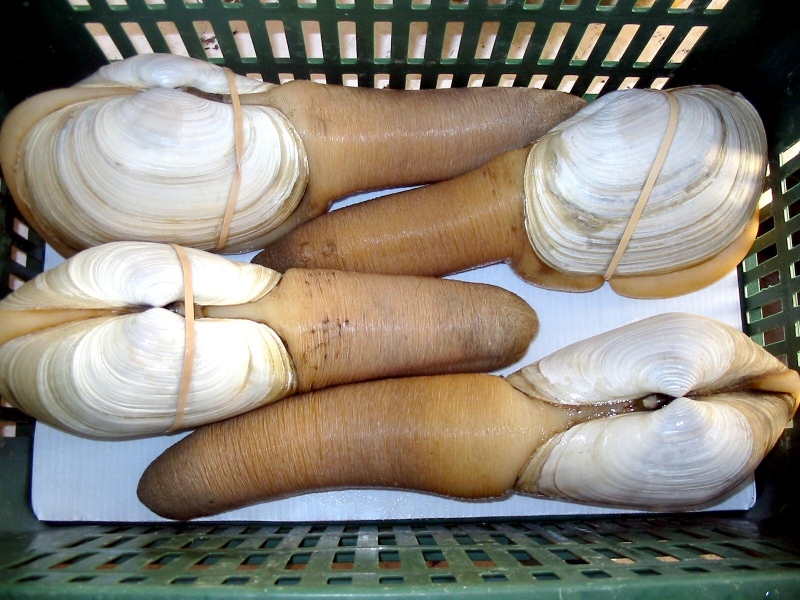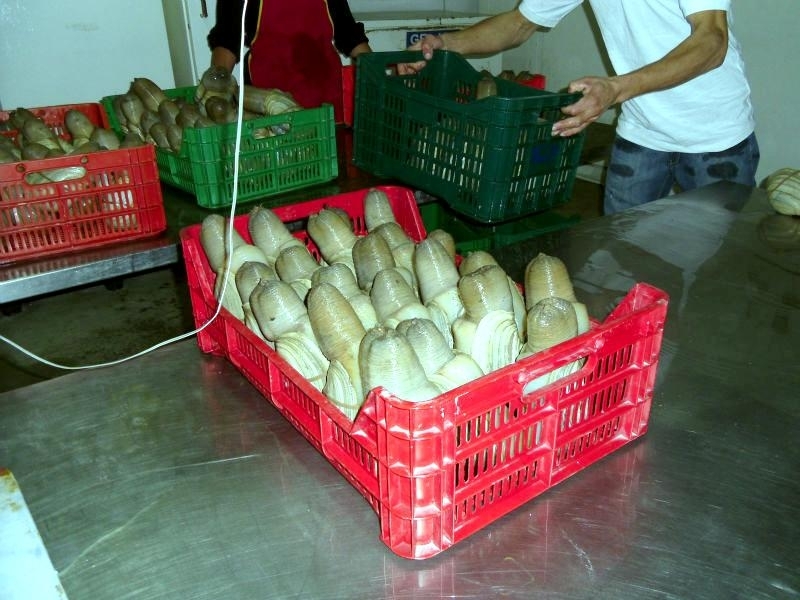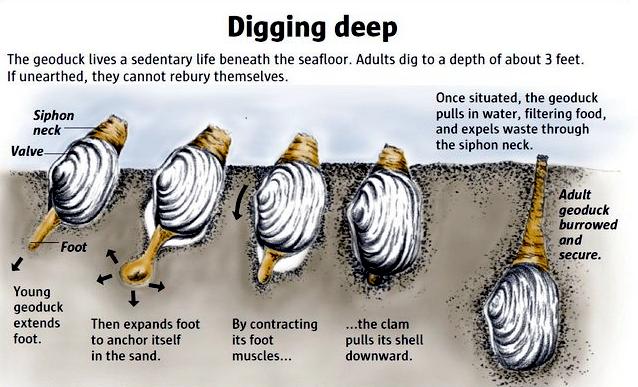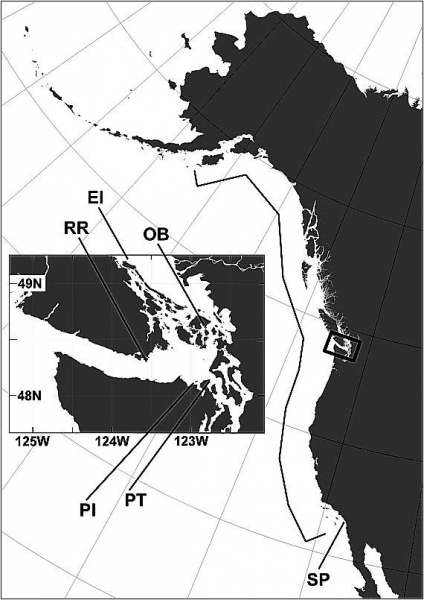“Panopea generosa”
The Geoduck Clam is the world’s largest burrowing clam, native to the Pacific coast of Washington & British Columbia. Pronounced “gooey-duck”, this creature grows to an average of about 2 pounds and a shell length of about 7 inches, but much larger specimens have been recorded. The shell grows about 1 inch per year in the first 4 years, then the growth rate slows. The average size is reached in 5 to 6 years. Geoduck Clams can live for as long as 150 years and the shells have concentric growth rings which record age, something like a tree. The origin of the word “clam” comes from the prehistoric Germanic root word “klam”, which meant “to press or squeeze together” and also gave us “clamp”. It was the tightly clamped shut shell of the aquatic “clam” that gave it its name. The name Geoduck is a corruption of a Native American phrase meaning “dig deep”. They are also known as King Clams and as Elephant Trunk Clams by the Chinese. Geoduck Clams burrow deep into the sand, from 18 inches to 4 feet normally. They live their lives buried in the sand, silt or gravel. As they grow, the size of the mantle (body) and siphon (neck) far outpace the size of the shell, so they cannot withdraw into the shell. Once the clam is fully buried, the siphon may stretch 3 feet back to the sea bottom. A Geoduck Clam feeds on phytoplankton, single-celled algae which it gets from seawater that it sucks down its siphon.
The meat of the Geoduck is prepared in a couple of ways. The neck may be chopped or ground for use in chowders. The body may be sliced raw for sashimi or pounded and pan-fried. The flavor is described as sweet with a crunchy texture. Although a novelty to Americans, Geoducks are big business in Asia with customers willing to pay serious money for the privilege of eating these clams. That demand has spawned a huge Geoduck industry, with considerable effort going into aquaculture (farming) of these animals. Experts estimate there are more than 100,000,000 Geoduck Clams in Puget Sound. Digging for Geoduck Clams is a tradition to those in the State of Washington. Since these clams live in places where the depth of the seabed ranges from 18 inches to over 300 feet, it’s only possible to dig for them when there is a minus tide. There is a specific clam season for the various beaches and there are restrictions. Only a hand-operated instrument is permitted and it’s not legal to take only the neck. The limit is 3 per-person per-day and that must be the first 3 Geoduck Clams dug, because an adult Geoduck will not survive being dug up and replanted.
